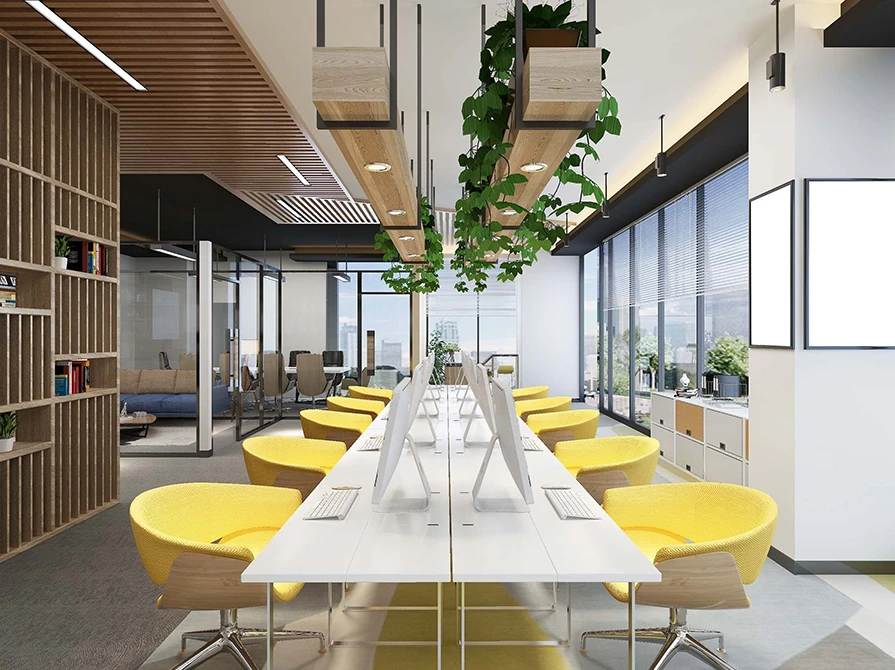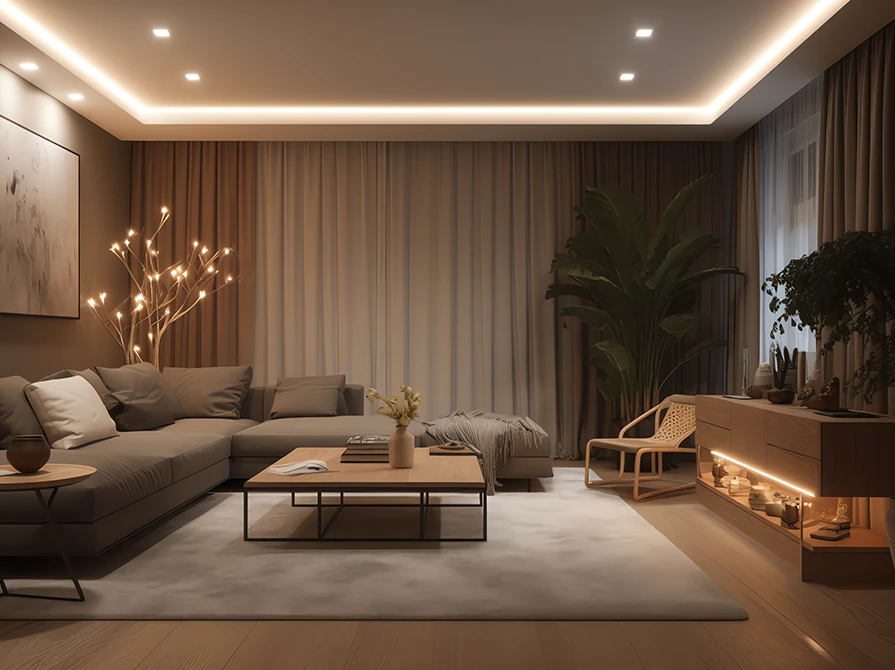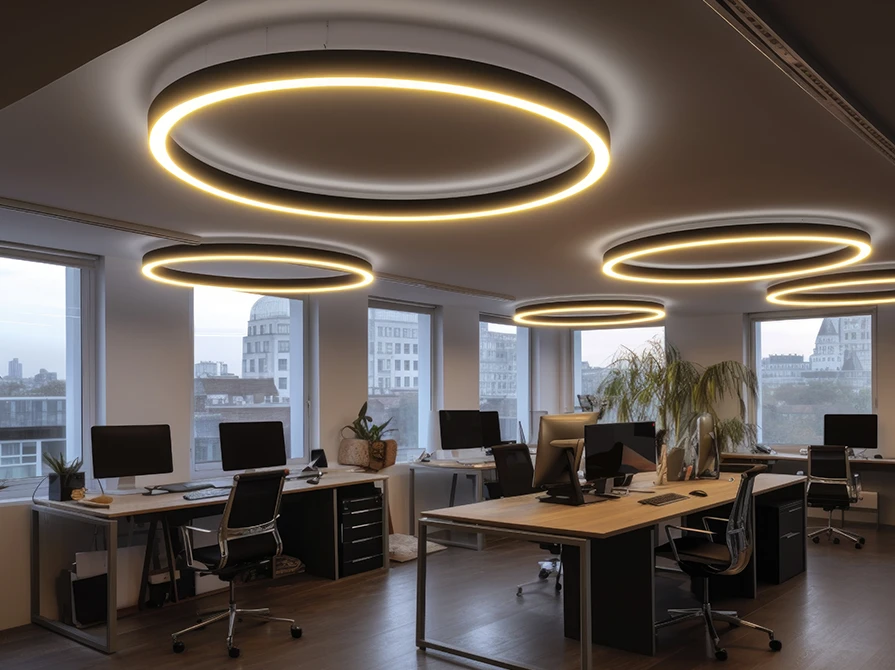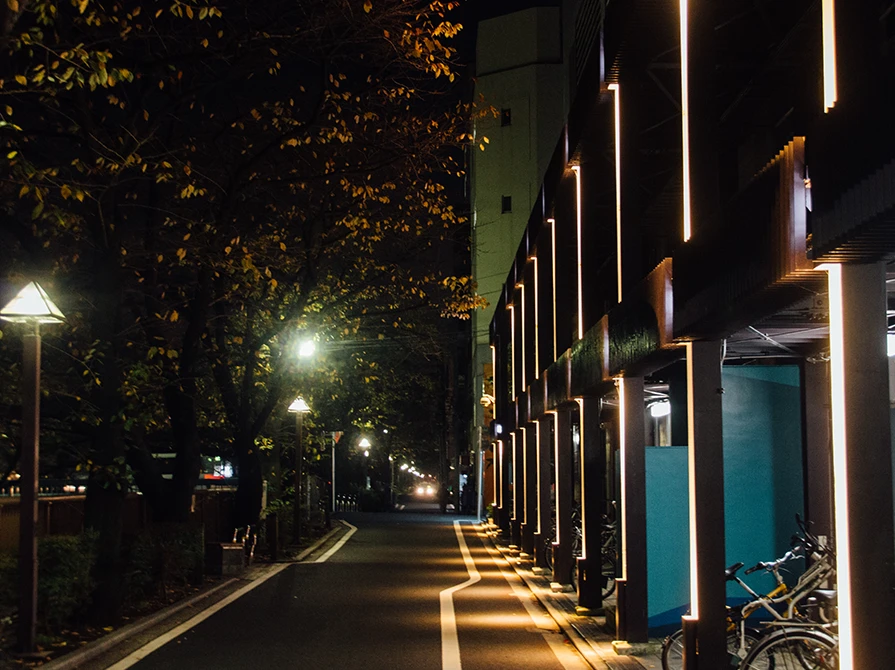

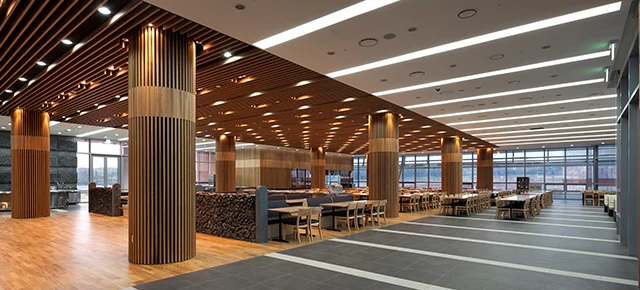
Architectural lighting is an essential aspect of the design and functionality of any space. When thoughtfully and creatively applied, it can transform an ordinary environment into a dramatic and captivating space. Lighting goes beyond mere functionality; it is an art form that can enhance the aesthetic appeal, mood, and functionality of any setting. In this blog, we will explore the profound impact of architectural lighting on interior design and the different ways in which it helps create dramatic spaces.
One of the key aspects of architectural lighting is its ability to emphasise the architectural features of a space. Whether it's the graceful curve of an archway, the texture of a stone wall, or the grandeur of a vaulted ceiling, architectural lighting can bring these elements to life. Well-placed fixtures can cast shadows and highlights, adding depth and dimension to a room.
Lighting has a profound influence on the ambience of a room. Architectural lighting can be used to create a wide range of moods, from cosy and intimate to vibrant and energising. For example, warm, dimmed lighting can make a living room feel inviting, while bright, white light can provide an energising environment in a workspace.
Architectural lighting has the ability to turn an ordinary space into something extraordinary. When used creatively, it can become an integral part of interior design, adding a layer of visual interest. Consider how uplighting a beautiful piece of artwork or a cascading chandelier in a grand lobby can serve as the centrepiece of a room.
Architectural lighting can be highly versatile. With dimmers and smart lighting systems, you can easily adjust the intensity and colour of the light to suit different occasions and times of day. This adaptability ensures that a room remains relevant and functional throughout the day and night.
One of the primary ways architectural lighting creates drama is by accentuating the key features of a structure. Whether it's a grand staircase, a historic facade, or a unique structural element, lighting can draw attention to these architectural highlights, making them stand out against the surrounding space. Carefully placed light fixtures, such as uplights, downlights, or wall washers, can cast shadows, revealing textures and details that might go unnoticed in natural light.
Lighting designers use various fixtures to create focal points within a space. Chandeliers, pendants, and spotlighting are commonly used to draw the eye towards specific areas or objects. By directing light to a particular point of interest, designers can guide people through the space and tell a story within it. Focal points can be sculptures, artworks, or even just a stunning architectural detail.
One of the most intriguing aspects of architectural lighting design is the deliberate manipulation of contrast. The interplay between light and shadow is a fundamental element that designers utilise to craft dynamic and dramatic atmospheres. By intentionally emphasising the disparities in illumination, designers can invoke a sense of depth, texture, and drama that captivates the beholder. For example, a dark room with a single spotlight on a piece of artwork can generate a dramatic effect that immediately captures one's attention.
The colour temperature of light can significantly influence the mood of a space. Warm white light, for instance, creates a cosy and inviting ambience, while cool white light can give a more modern feel. Lighting designers carefully choose the colour temperature and colour rendering index (CRI) of light sources to achieve the desired atmosphere. Colour-changing LED lights also allow for dynamic and dramatic transitions in ambience.
A key principle of architectural lighting is layering. This involves combining various types of lighting, including ambient, task, and accent lighting, to create a multi-dimensional environment. This layering not only contributes to functionality but also adds depth and drama to the space. For instance, in a restaurant, a combination of general ambient lighting and focused, warm task lighting over dining tables can set the mood for an intimate dining experience.
Architectural lighting is not just about creating visually stunning spaces; it is a potent influencer of our emotional and psychological responses to our environment. The effects of well-designed lighting extend far beyond the aesthetics, as it has the power to evoke a wide range of emotions. Its impact is multi-faceted and can be seen across diverse settings, each serving a unique purpose.
In residential and office spaces, architectural lighting has the potential to create a sense of comfort and inspiration. Well-placed fixtures can cast a warm, inviting glow that transforms a room into a comfortable sanctuary, perfect for relaxation and introspection. At the same time, carefully designed office lighting can stimulate creativity and motivation, encouraging innovation and productivity.
Hospitals, clinics, and healthcare facilities have embraced the power of architectural lighting to foster tranquillity and promote healing. Soft, diffused lighting can create a calming atmosphere, alleviating stress and anxiety in patients. In recovery rooms and waiting areas, it offers solace and eases the emotional strain on patients and their families.
In the competitive world of hospitality and retail, architectural lighting is an indispensable tool. It can create unforgettable impressions on guests and customers. The ambience of a restaurant, for example, is greatly enhanced by carefully designed lighting that complements the establishment's theme. In retail, it can guide shoppers through a store, emphasising product displays and enticing them to explore further.
Architectural lighting is a powerful tool for designers to transform spaces into dramatic and captivating environments. By thoughtfully applying lighting principles and techniques, and understanding the psychological impact of light, designers can create atmospheres that leave an everlasting impression. From accentuating architectural features to crafting dynamic experiences, lighting is an art form that truly brings spaces to life, making it an essential element of the architectural world. Wipro Lighting has a wide range of high-quality luminaries that can be useful in bringing the ideas of designers and architects to life.
